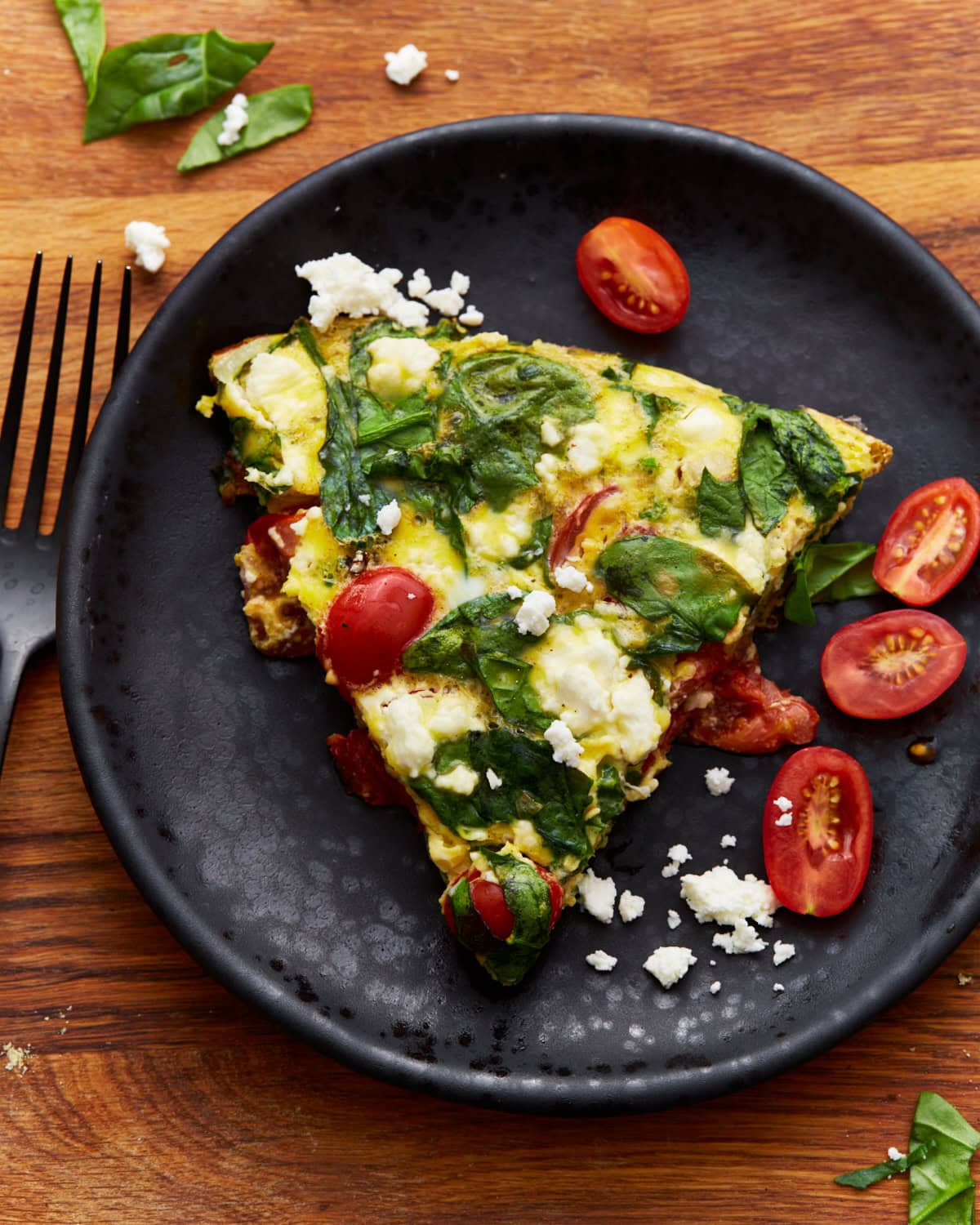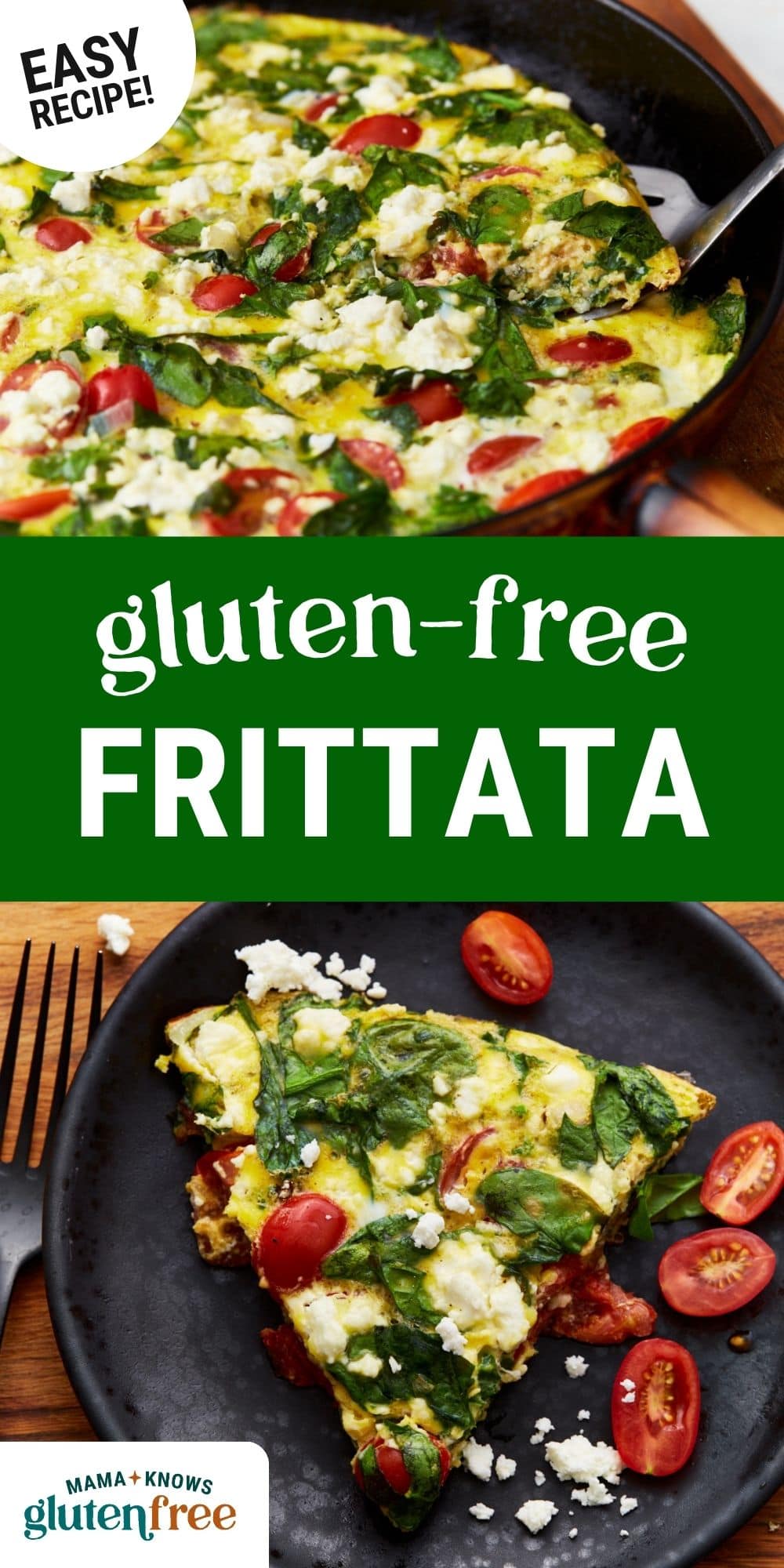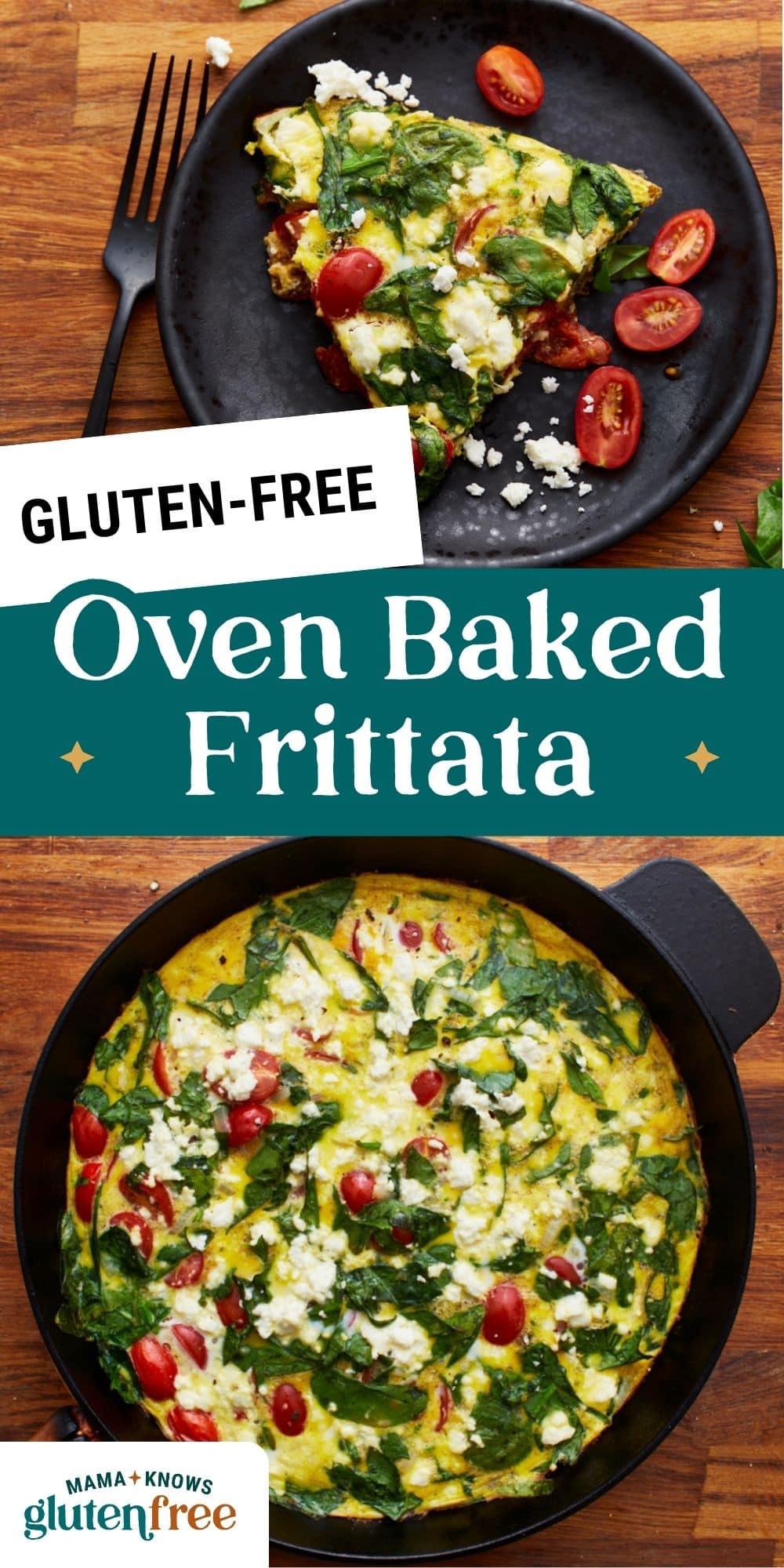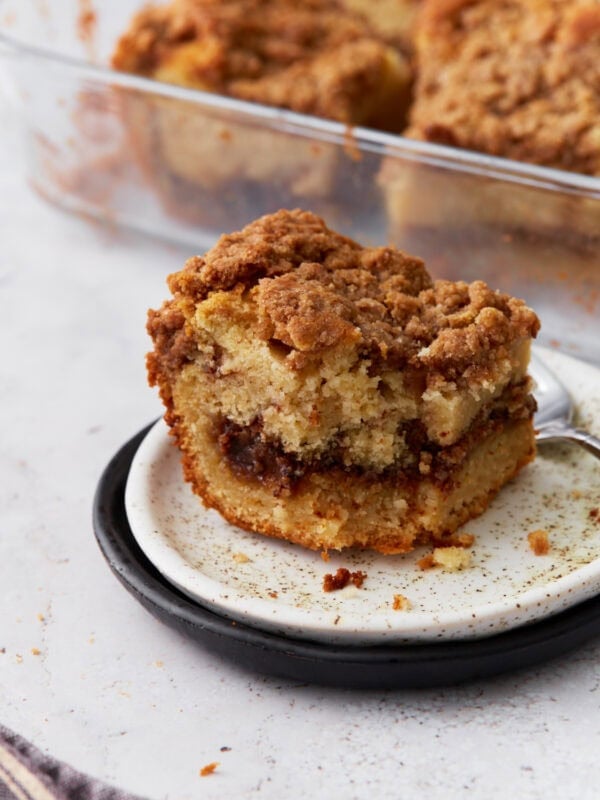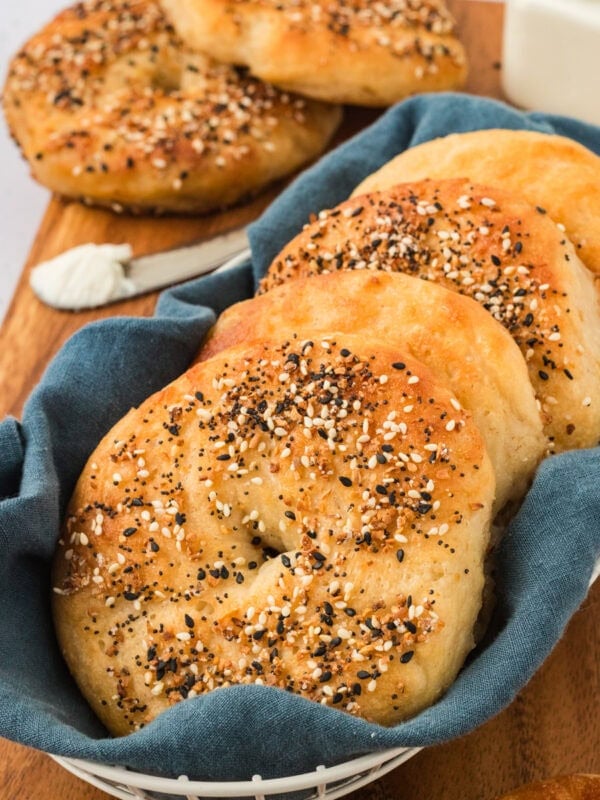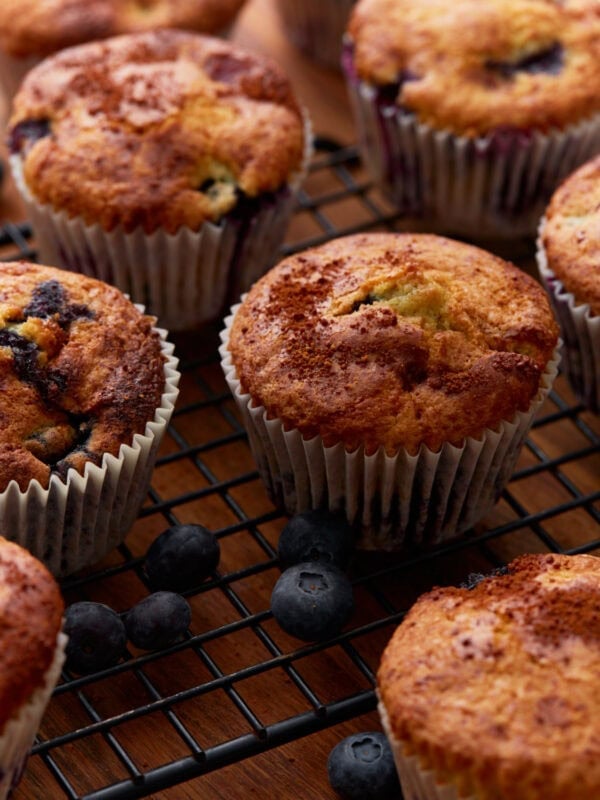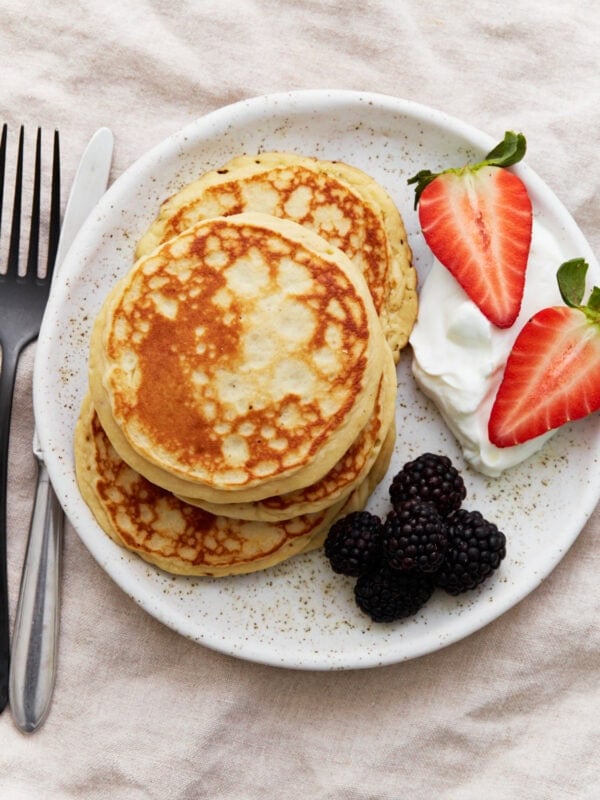Frittata
Published
Light and savory gluten-free frittata is easy and quick to make. These crustless quiches are simple, versatile, and a deliciously savory meal. They’re perfect for meal prep and feeding a crowd for brunches.
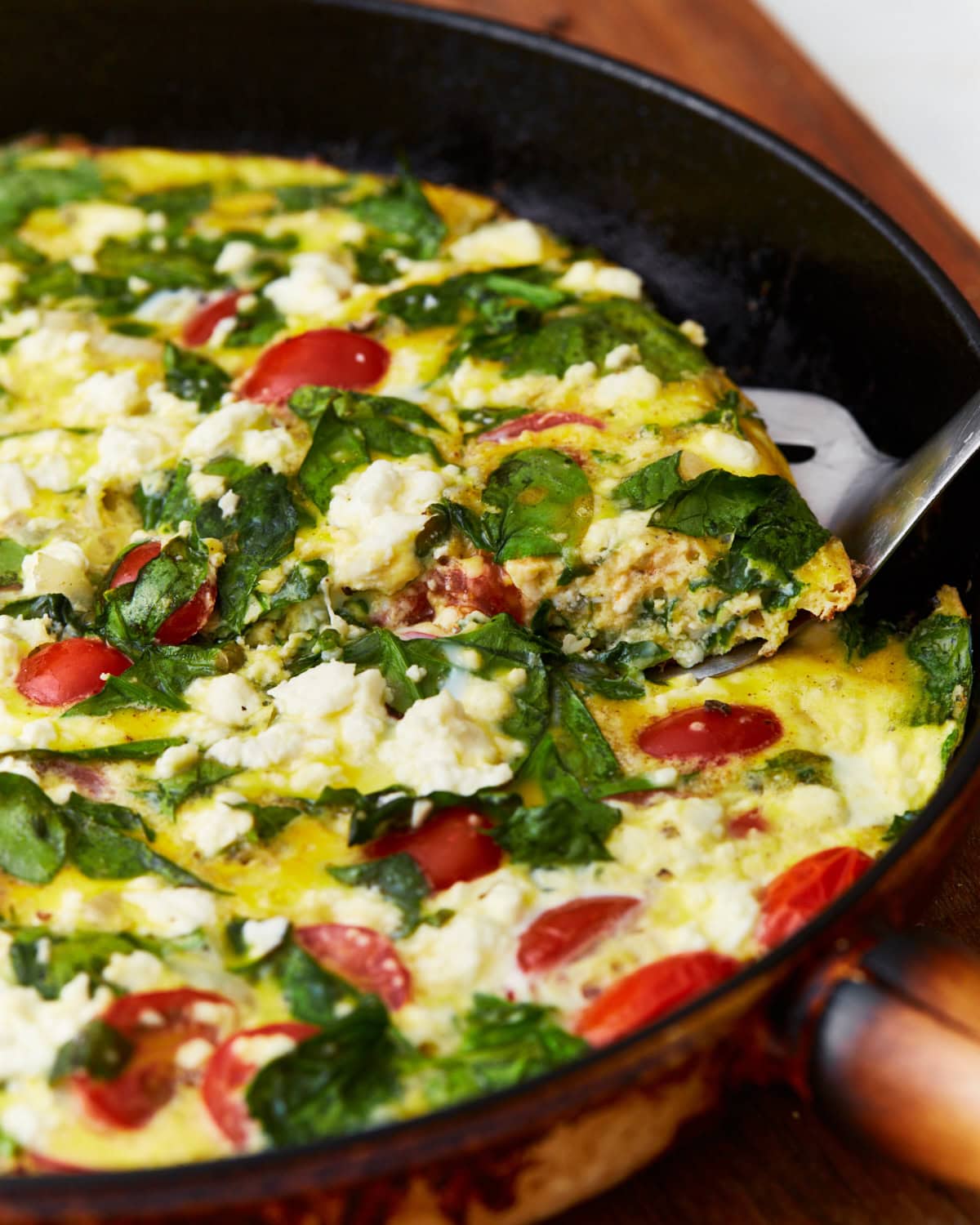
I love egg bakes, and frittatas are at the top of that list. They’re among the easiest, most versatile meals you can make. If I need a gluten-free meal to feed lots of mouths, I’ll whip this together ahead of time or day of when I have time. My favorite part is that it’s crustless, unlike my gluten-free quiche, so it’s totally gluten-free and it can easily be made dairy-free with some substitutes.
I made a Mediterranean egg dish with fresh tomatoes, spinach, and salty feta. My favorite part about these egg casseroles is that you can use whatever ingredients you want. It’s sort of a rustic egg bake with endless possibilities. Sometimes I’ll add spicy Italian sausage, goat cheese, and peppers.
Frittata
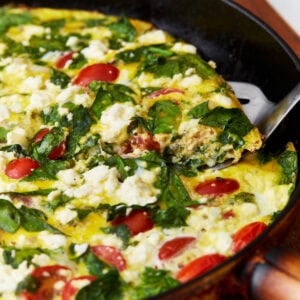
Ingredients
- 6 large eggs
- 1/4 cup milk, For dairy free, use an unsweetened/full-fat alternative milk perfer almond milk.
- 1/2 teaspoon salt
- 1/4 teaspoon pepper
- 2 tablespoons cooking oil*
- 1 yellow onion
- 2 cups fresh spinach, about 4 ounces
- 1 pint grape tomatoes
- 1/4 cup feta cheese crumbles**, For dairy-free, omit the feta cheese or replace it with a non-dairy option like Violife Just Like Cheddar Shreds.
Instructions
- Preheat the oven to 350ºF.
- Whisk together the eggs, milk, salt, and pepper in a large bowl. Set the egg mixture aside.
- Dice the onion and set aside.
- Heat an oven-safe skillet over medium heat. Add the cooking oil. Saute the diced onion until soft and translucent.
- While the onion cooks, roughly chop the spinach and slice the grape tomatoes in half.
- Add the chopped spinach and sliced tomatoes to the skillet. Quickly stir to combine with the onions without cooking or wilting the spinach.
- Immediately pour the egg mixture over the vegetables. (It's okay if the eggs don't fully cover the vegetables.) Top the egg mixture with crumbled feta.
- Let the frittata continue cooking over medium heat until the eggs are set around the edges (about 3 minutes).
- Transfer the frittata to the oven and bake until the eggs are set in the center but still wobble slightly (about 15 minutes, but the total bake time will vary). The frittata will continue to cook as it cools in the hot pan, so avoid overcooking it at this step.
- Remove the frittata from the oven. Let the frittata cool for 5 minutes before slicing and serving. If the frittata is not fully set when you try to slice it, return it to the oven for another 2-3 minutes.
Notes
Nutrition
Nutrition information is automatically calculated, so should only be used as an approximation.
Ways to Cook a Frittata
- Stovetop-to-Oven Hybrid Method: This is the easiest way to cook a frittata perfectly without overcooking the eggs on the bottom of the pan. It’s also the best method if you need to cook some of the fillings before the egg mixture is added to the skillet. I suggest using a cast-iron skillet, but you can also use a well-oiled stainless steel pan. Be sure your pan is oven-safe.
- Stovetop Method: To cook entirely on the stovetop, keep the heat source low and gently cook the mixture until the eggs are fully set in the center. Avoid covering the pan to set the egg mixture since this will add unwanted moisture.
- Oven Method: If all the fillings are pre-cooked, and you don’t need a stovetop burner, you can easily cook the dish in the oven. Preheat the cast-iron skillet in the oven, and carefully add the fillings and egg mixture. You can use a baking dish if you don’t have a cast-iron skillet for the oven method.
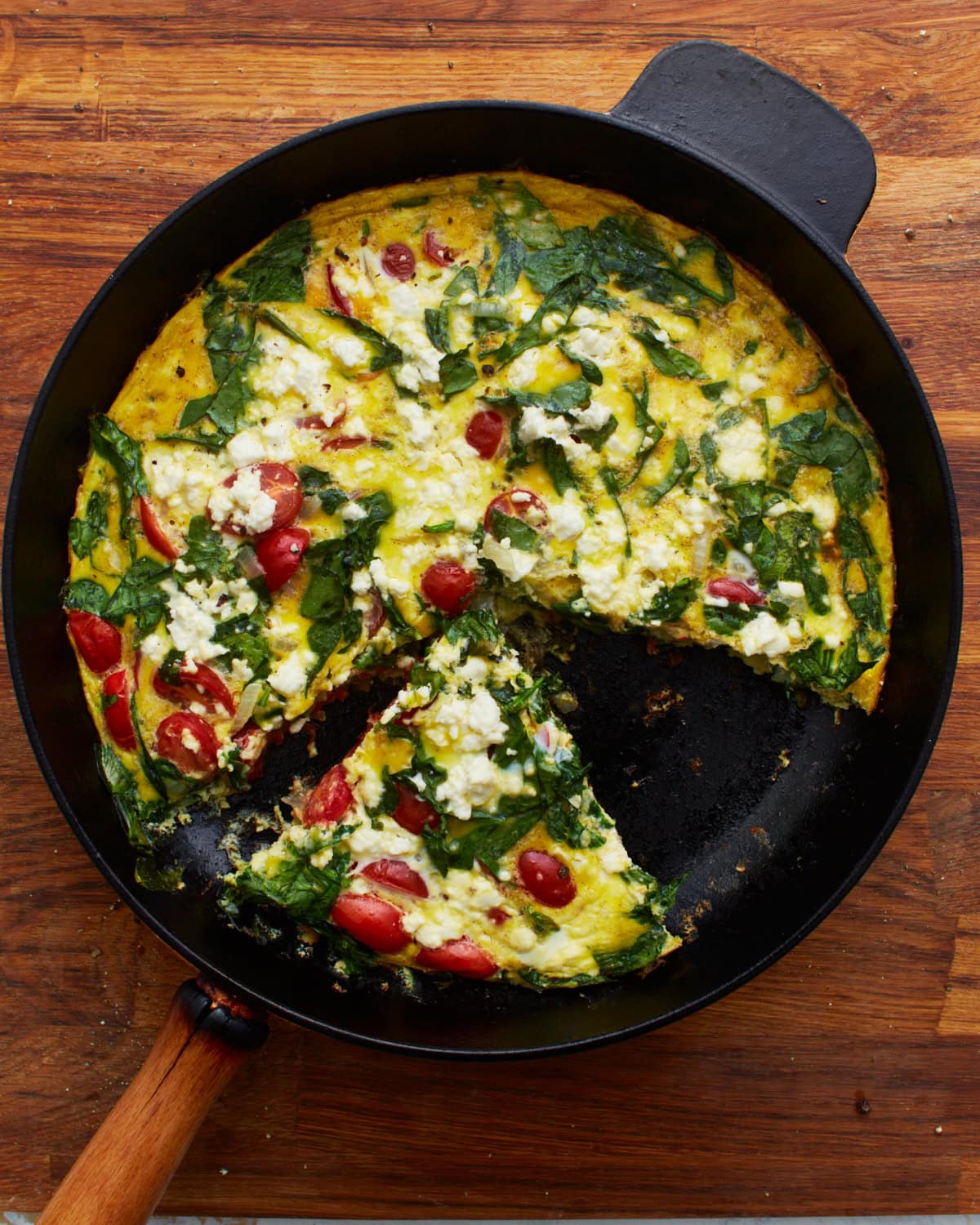
How to Make a Frittata Step-by-Step
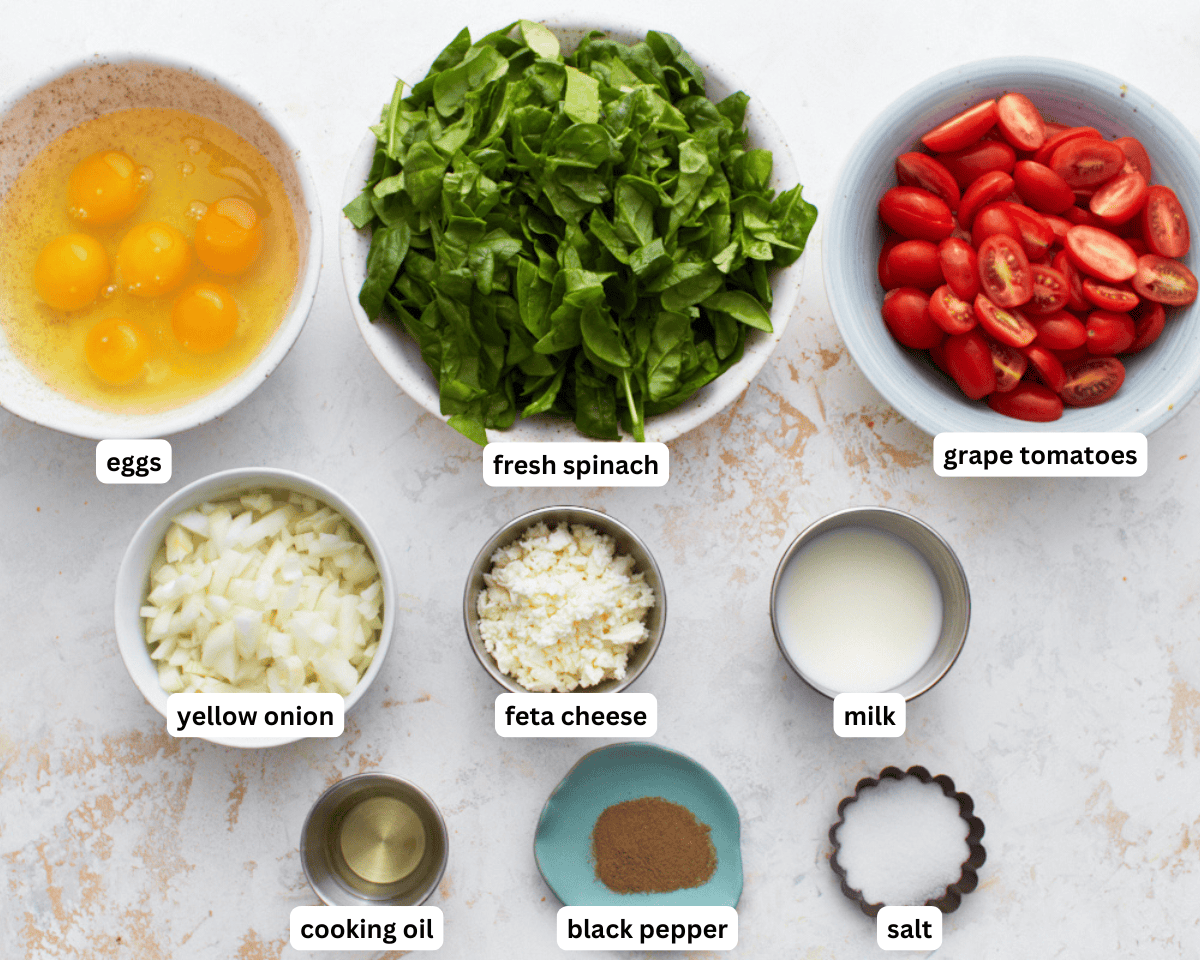
Gather all your ingredients together.
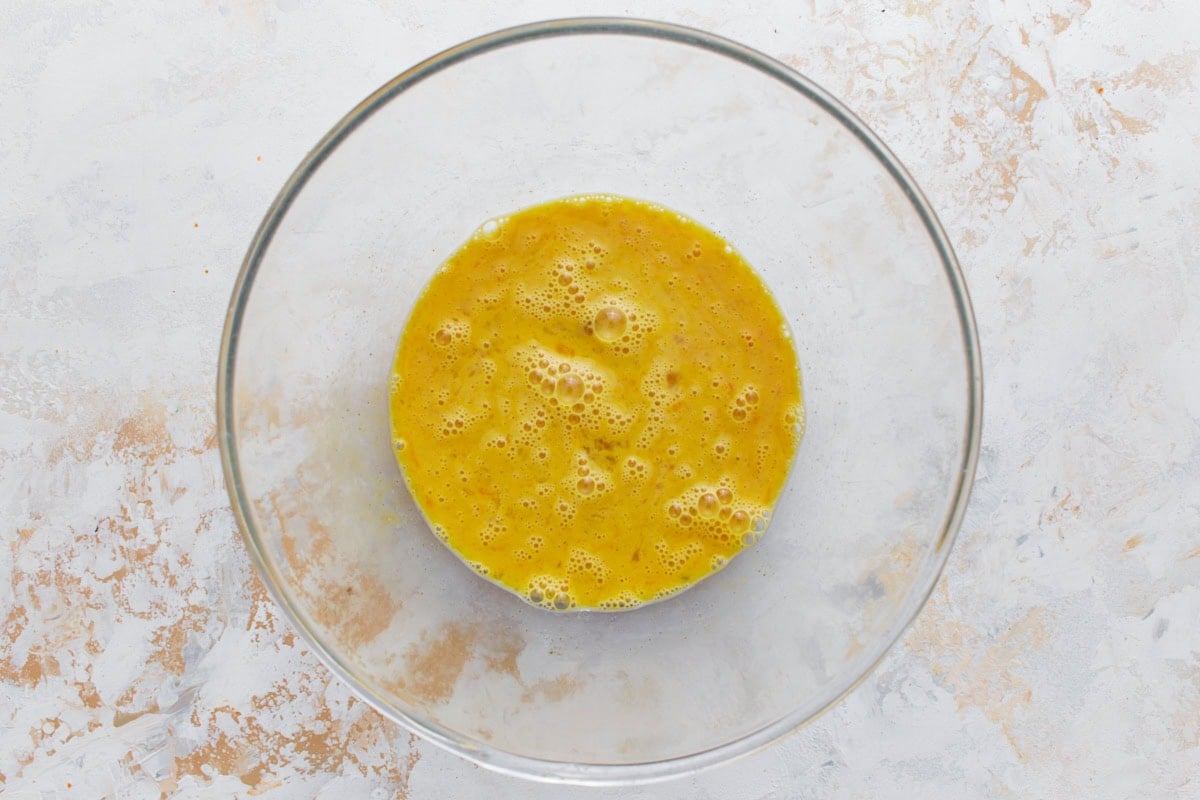
Preheat the oven to 350ºF. In a large bowl, whisk together 6 large eggs, ¼ cup milk (or dairy-free alternative), ½ tsp salt, and ¼ tsp black pepper. Set aside for later.
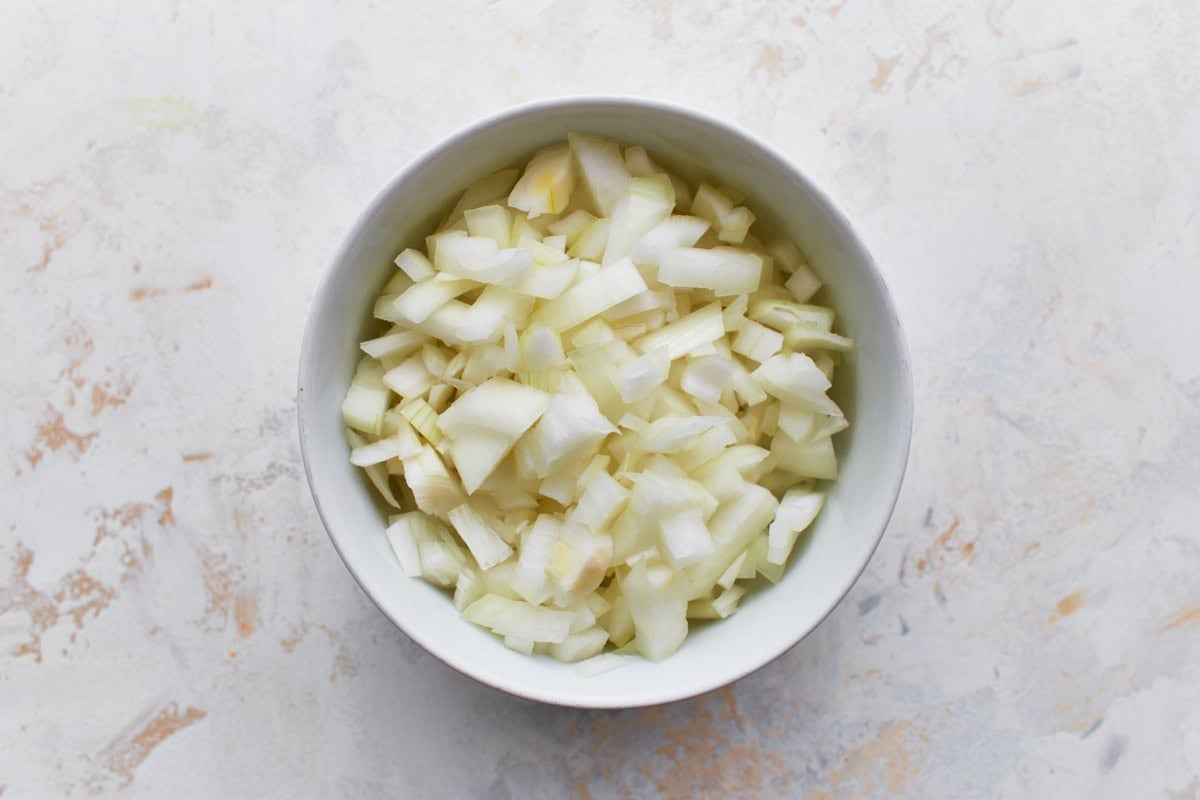
Finely dice up 1 yellow onion. Grease a cast-iron skillet (or other oven-safe skillet) with 2 tbsp cooking oil and heat on the stovetop over medium heat.
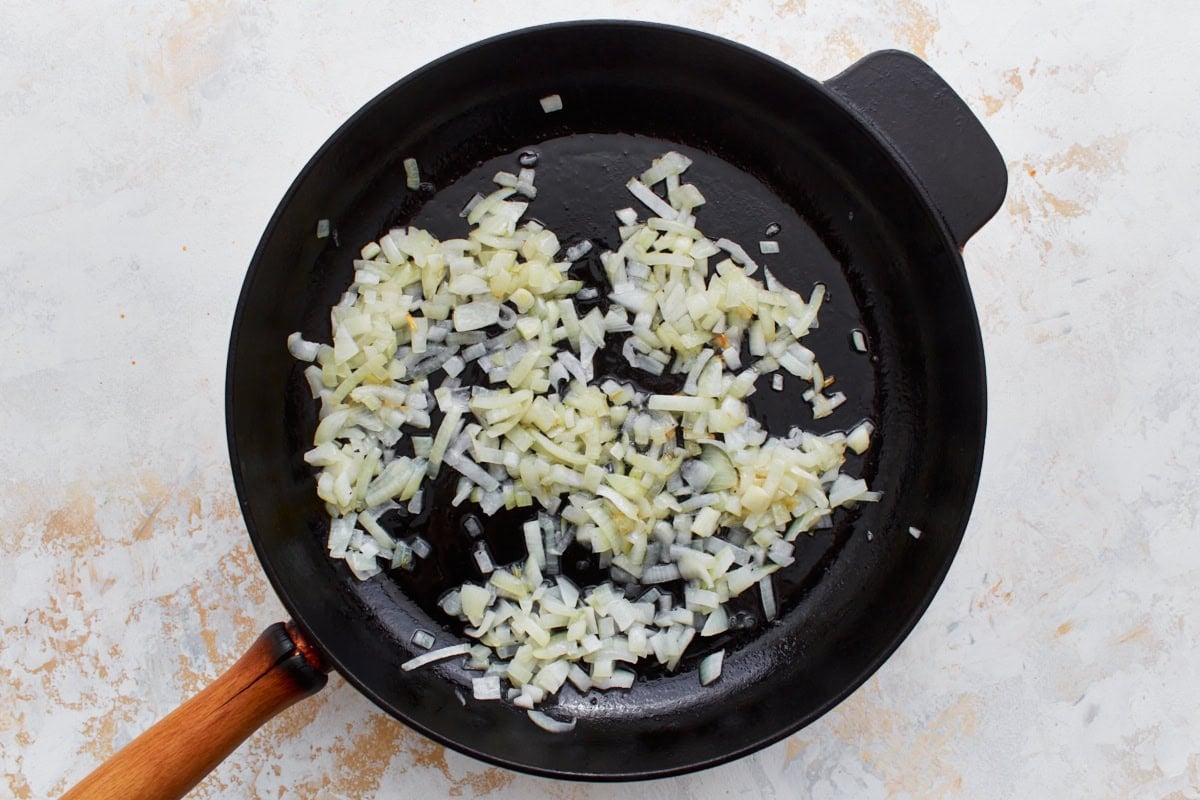
Add the diced onions to the skillet and sauté until soft and translucent.

While the onions sauté, roughly chop 2 cups of fresh spinach and halve 1 pint of grape tomatoes. Add the spinach and tomatoes to the skillet, stirring briefly to combine—just enough to mix, but not cook, the spinach.
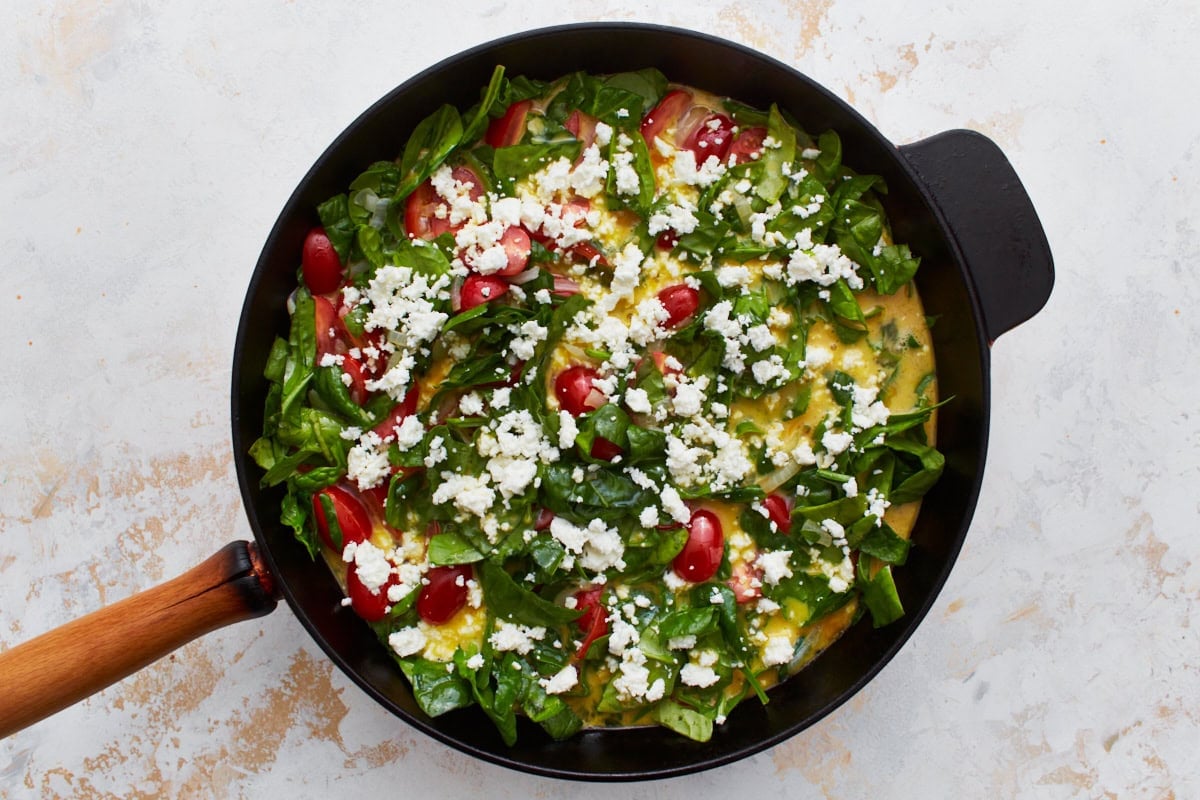
Pour the egg mixture over the vegetables right away, then sprinkle with ¼ cup of crumbled feta or a dairy-free alternative.
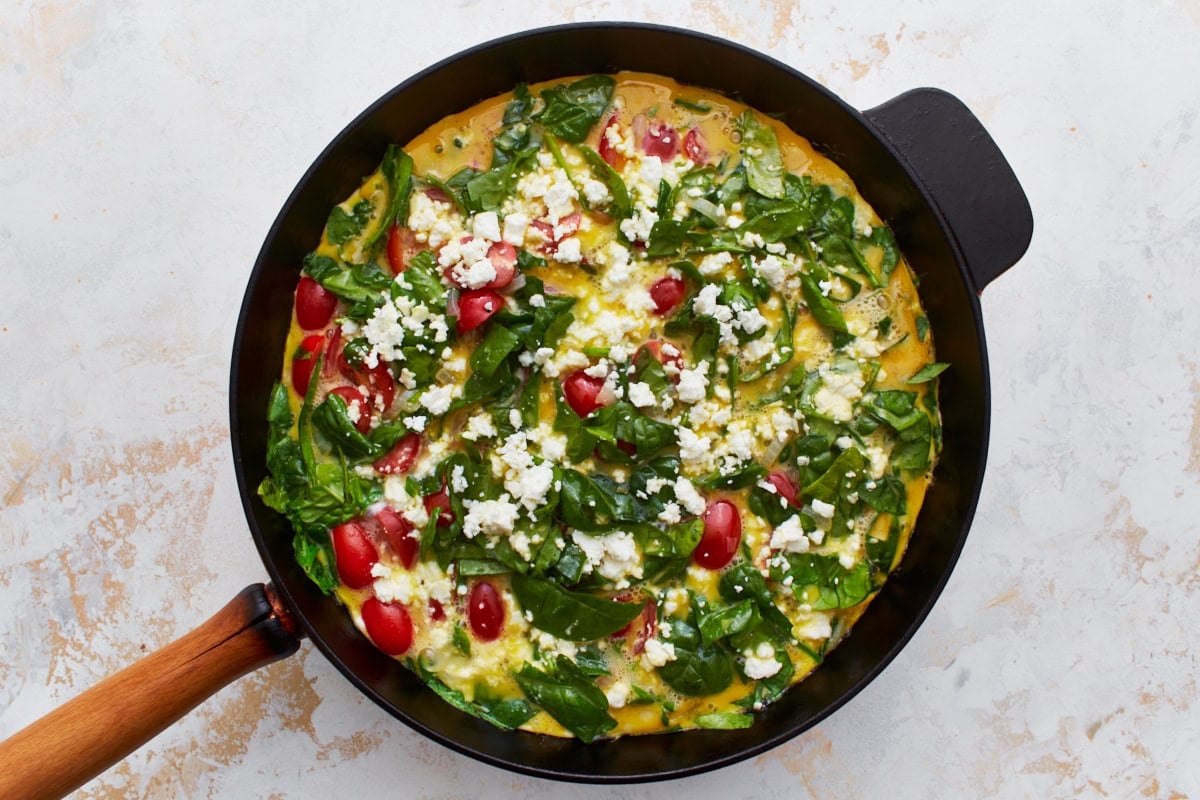
Cook the frittata on the stovetop for about 3 minutes or until the eggs are set around the edges.
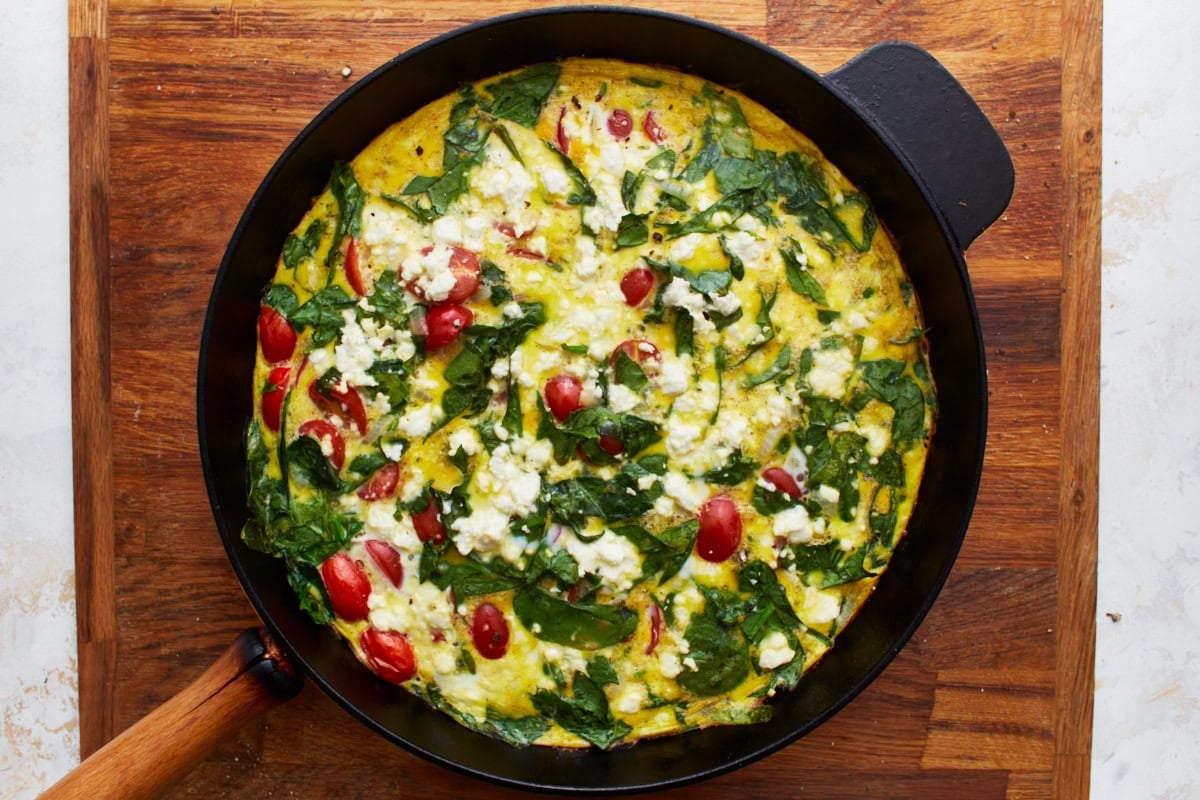
Carefully transfer the hot oven-safe skillet into the preheated oven. Bake until the eggs are set in the center but still slightly wobbly. This takes about 15 minutes, but the bake time can vary. I like to check them after 8-10 minutes.
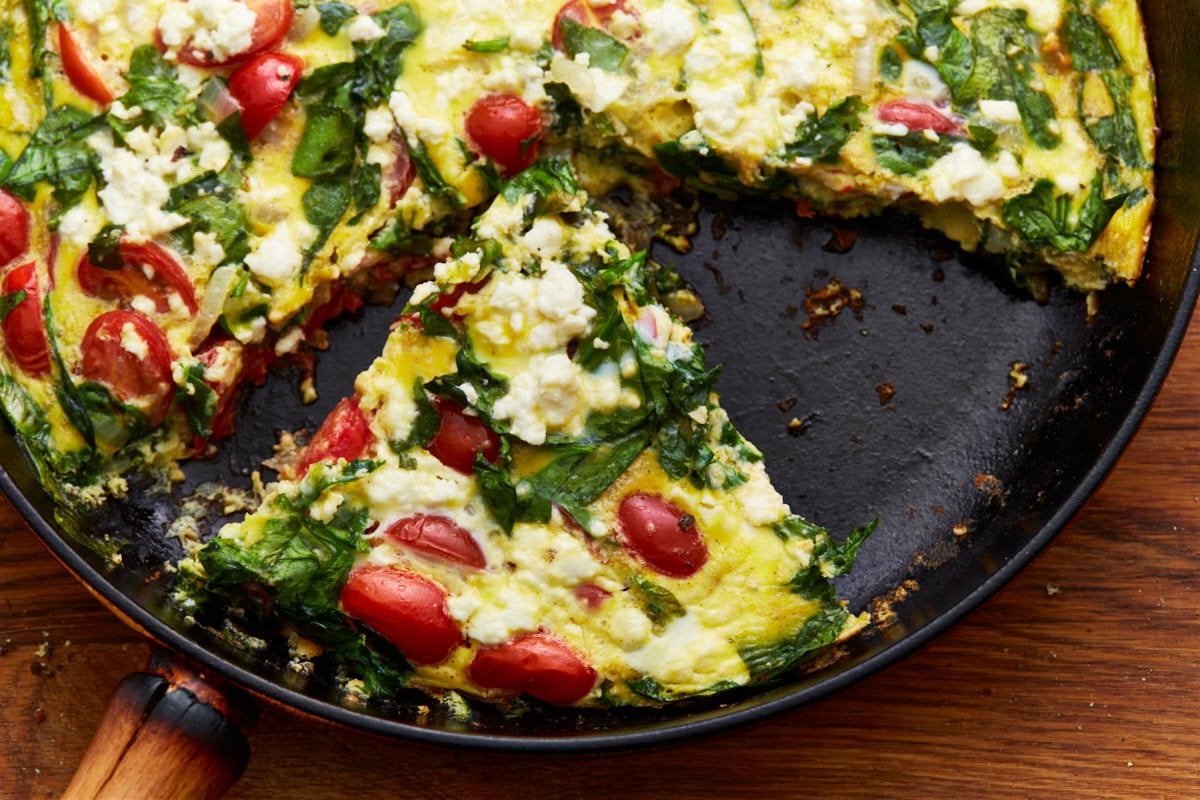
The eggs will continue to cook in the pan so they can be taken out slightly underdone. Remove from the oven and set aside to cool, and set for 5 minutes. If you notice the eggs aren’t fully set when slicing into the bake, return to the warm oven for 2-3 minutes. Slice, serve, and enjoy!

Serving Suggestions
I usually serve this alongside my gluten-free cinnamon roll french toast casserole on Christmas morning for a savory sweet combination. If serving as a classic, savory breakfast or brunch main dish, it’s great with a simple fruit salad and a starchy potato side like Loaded Bacon Ranch Potato Salad or Gluten-Free Scalloped Potatoes.
Storage Instructions
This frittata is best enjoyed fresh but can be served warm or cold. Store leftovers in an airtight container in the refrigerator for up to 4 days. For a quick meal, try eating the chilled slices the next day. If reheating, use the microwave on low power in short intervals to prevent overcooking the eggs.
You can also freeze the frittata. Once fully cooled, wrap it tightly in aluminum foil and freeze for up to 3 months.
